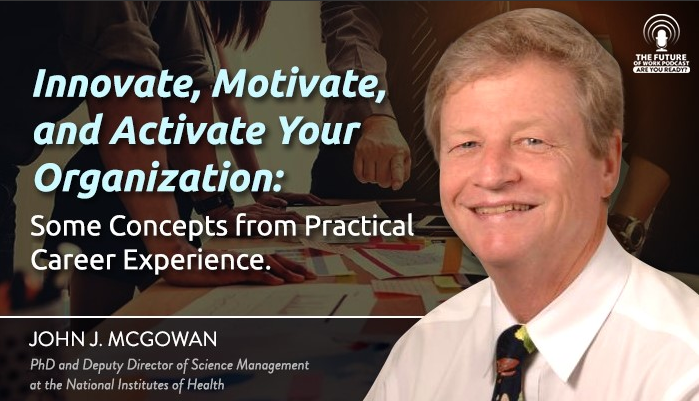Click Here to Subscribe via iTunes
Click Here to Subscribe via RSS Feed (non-iTunes feed)

Dr. John J. McGowan, is a PhD and he serves as the NIAID Deputy Director for Science Management. In this position, Dr. McGowan provides leadership for scientific, policy, business, and administrative management of the Institute and conducts senior-level interactions with the extramural community, other National Institutes of Health (NIH) components, and the NIH Office of the Director.
The National Institutes of Health (NIH) is the primary agency of the United States government responsible for biomedical and public health research. It is comprised of 27 separate institutes and centers of different biomedical disciplines and is responsible for many scientific accomplishments, including the discovery of fluoride to prevent tooth decay, the use of lithium to manage bipolar disorder, and the creation of vaccines against hepatitis, Haemophilus influenzae (HIB), and human papillomavirus (HPV).
NIH represents a different world than private sector organizations – the public sector. For example, they are required to seek Congressional approval to make changes in their site facilities. Though Congress must approve the budget, they do not necessarily provide the funds for it to be carried out. The most recent building overall took a total of 8 years.
Beyond the need for budget approval, the government also controls the salaries of the employees at NIH. This makes it challenging to attract and retain the top talent within their fields. People must be motivated by the mission to stay at NIH. Often, people can leave the public sector and go to private organizations, making up to 3 times the salary. It is also a highly competitive environment; about 2000 – 3000 scientists begin working each year but only about 1 – 3% become permanent scientists.
When asked for leadership advice, Dr. McGowan says leaders must first be present with people and understand where what they are thinking and feeling at that moment
Second, they need to evaluate people’s emotional state. What is the level? Low, medium, high? If they are at high, they won’t hear you – so let them burn that level down before you talk with them.
Leaders also need to connect with the emotion they are trying to convey. That emotion is 90% more effective than anything you will say.
What you will learn in this episode:
● How many cyber attacks NIH encounters each day and how they protect themselves against the threats.
● Differences between private and public organizations
● How people stay motivated at NIH
● Workspace changes NIH is going through
● How Dr. McGowan first became interested in science
Links from the episode:
LinkedIn
National Institute of Allergy and Infectious Diseases
The post Innovate, Motivate, and Activate Your Organization appeared first on Jacob Morgan.



